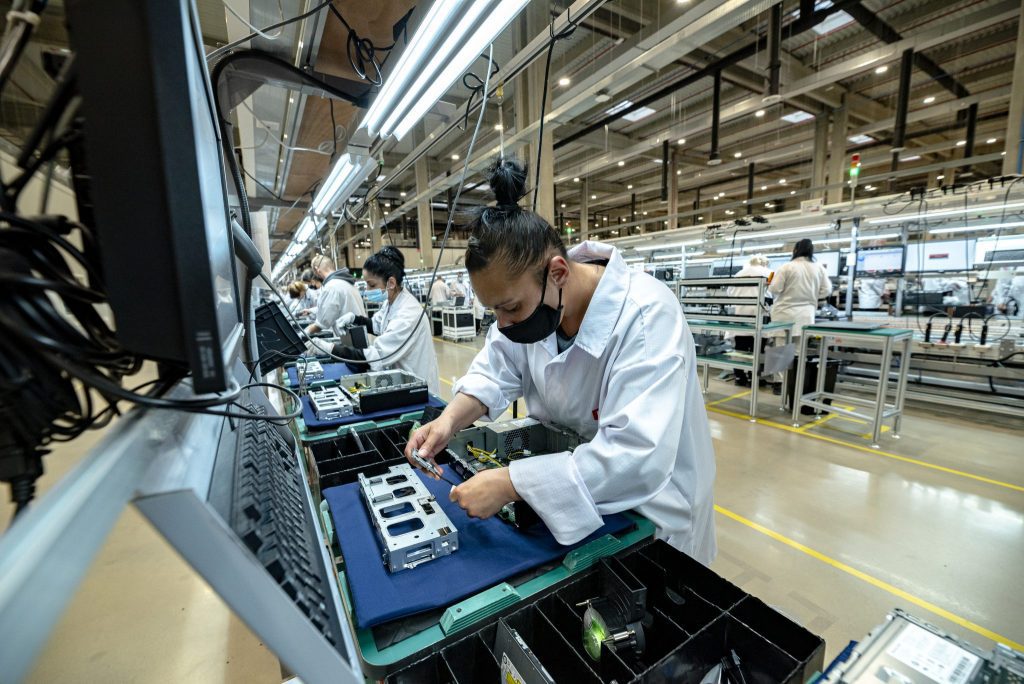Steering well-informed strategic decisions with a near-real-time view of the environmental, social, and governance performance of the manufacturing site.
Challenge: Accelerating the Shift to Sustainability
Climate change is one of humanity’s biggest threats, and global enterprises are now working closely with governments and regulatory authorities to accelerate the shift to sustainability. Alongside environmental improvements, it is also crucial for businesses to implement healthy social and governance frameworks—helping to promote greater workplace safety, diversity, and inclusion.
Lenovo is committed to achieving Net-Zero emissions by 2050 and our sustainability efforts start with our own manufacturing and supply chain. To help achieve this goal, Lenovo has developed an innovative ESG management system called Lenovo ESG Navigator that helps monitor key ESG metrics at the factory site and deliver near-real-time insights on GHG (greenhouse gas) emissions and energy use.
This article explores how the Lenovo ESG management platform is helping Lenovo monitor ESG performance across the value chain—and how businesses across all sectors can leverage a data-driven ESG performance management system.


Challenge: Striving for ESG Excellence
Committed to building a sustainable global economy, promoting diversity and inclusion in the workplace, and being a responsible corporate citizen, Lenovo has launched bold targets to improve its performance against key ESG metrics.
In particular, Lenovo is committed to net-zero emissions by 2050 with emission targets validated by the Science Based Targets Initiative (SBTi), an independent climate action group for the private sector.
Rico Liu, Sr. Manager, GSC Global Manufacturing at Lenovo, explains: “To help measure our progress toward Net-Zero, our goal is to reduce Scope 1 and Scope 2 greenhouse gas [GHG] emissions by 50% by 2030. For Scope 3 GHG emissions, we are targeting reductions of 25% per tonne-km of transported product in upstream transportation and distribution, reductions of 35% on average from the use of sold products, and reductions of 66.5% per million US$ gross profit within the same timeframe.”
Challenge: Gathering Fine-Grained Insights
Hundreds of different factors contribute to the overall sustainability of Lenovo’s operations. However, measuring the impact of sustainability initiatives at the manufacturing site presented some tough challenges.


Previously, Lenovo used manual processes to track practically all ESG metrics at its manufacturing sites. For example, employees used spreadsheets to track data on everything from energy usage on the factory floor to occupational health and safety, incident reporting, and workplace risk mitigation measures.
Rico Liu says: “What can be measured, improves—but without the right tools, it’s impossible to keep track of all manufacturing-related ESG variables in a company of Lenovo’s size. To solve that challenge, we embarked on an ambitious project to digitize our manufacturing site and monitor ESG data points.”
